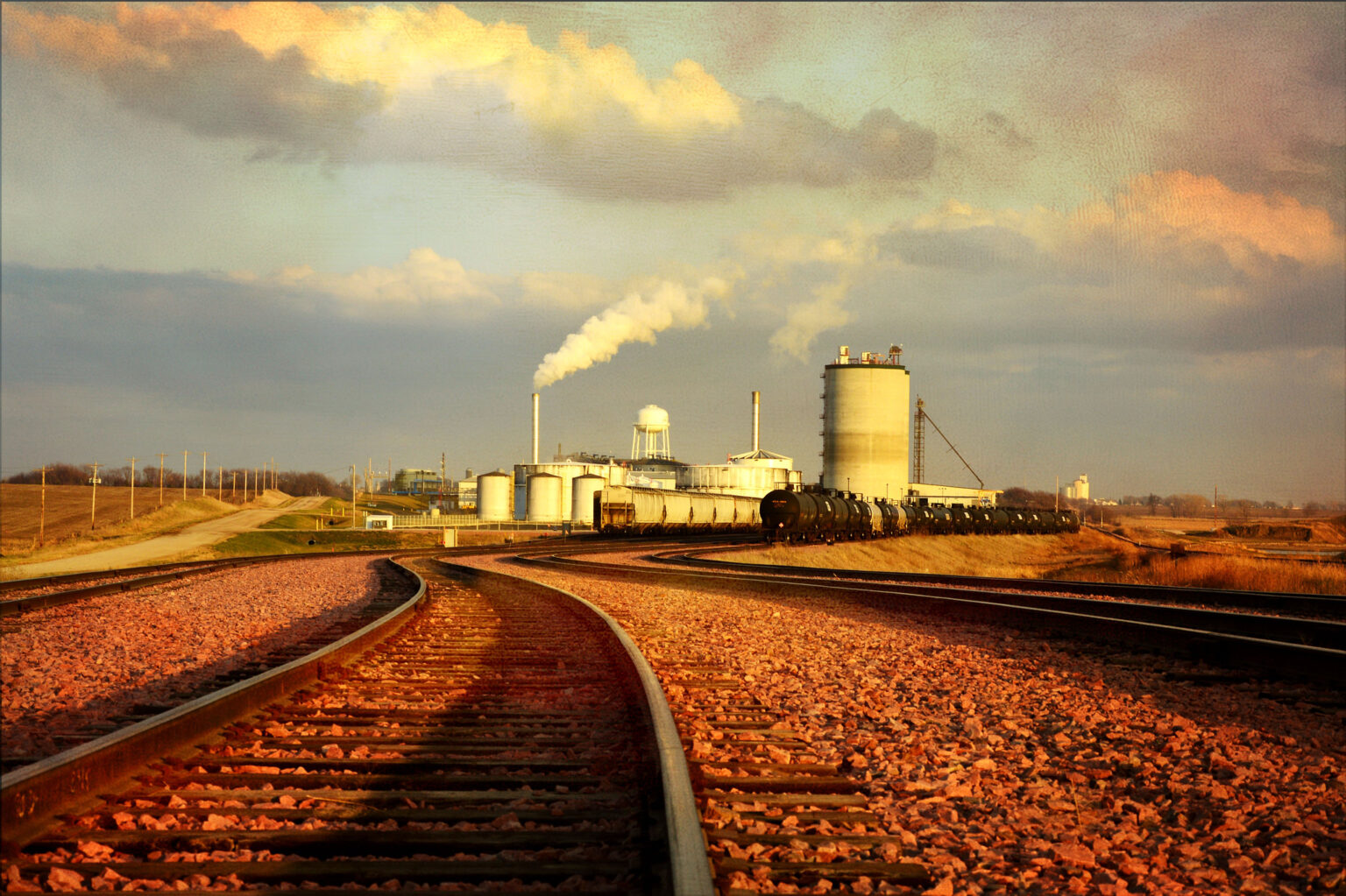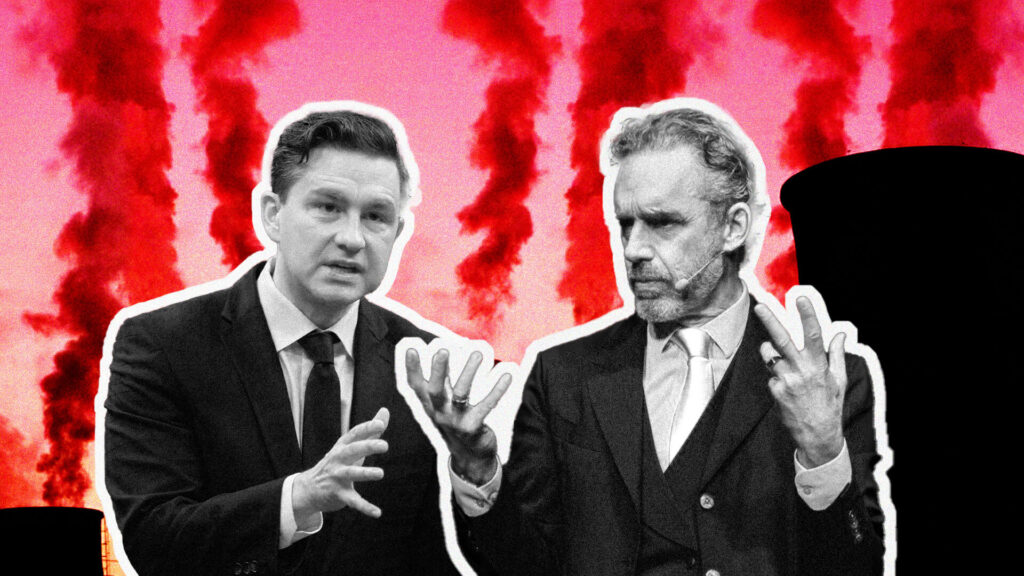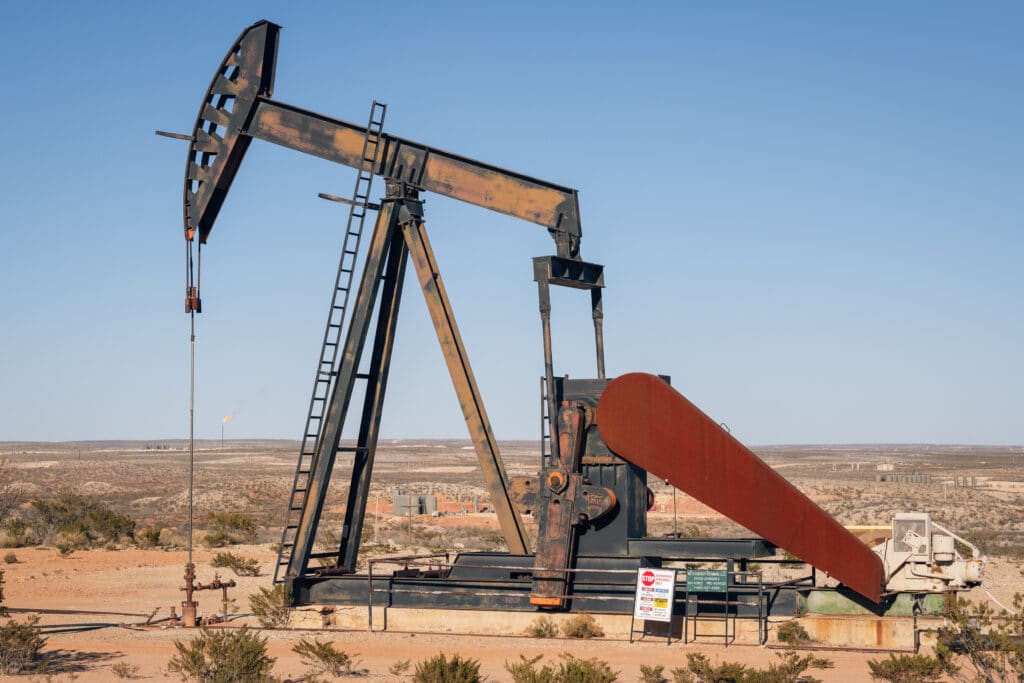Despite pledges to the contrary, a massive proposed carbon capture project could in fact be used to pump more oil out of the ground, rather than simply storing carbon emissions from ethanol production, as it was pitched originally.
A recent Reuters report indicates that, according to its review of regulatory filings and recordings of company officials, representatives from Summit Carbon Solutions have said the company is open to using captured carbon dioxide for enhanced oil recovery (EOR), a potential lifeline to North Dakota’s waning oil sector.
“Today, we don’t have any shippers who want to ship CO2 for EOR. When that changes, we will likely move it for that purpose,” Wade Boeshans, Summit’s executive vice president, said at a December event in North Dakota hosted by the oil industry-backed astroturf group Friends of Ag and Energy.
The company previously had denied its expansive Midwest Carbon Express project would be used for EOR, a process that involves injecting carbon dioxide into old oil wells to extract otherwise inaccessible sources of oil. A DeSmog investigation of a dozen major CCS projects, including many EOR projects, found cost-overruns, missed targets, and net increases in emissions.
While the oil industry brands carbon capture and storage (CCS) as a climate solution, most carbon capture projects currently operating in the United States, and around the world, are actually just used for EOR. And they aren’t even that good at storing carbon.
“During EOR, 40 percent of the CO2 captured is released right back to the air,” Mark Jacobson, civil and environmental engineering professor at Stanford University, told DeSmog. And that’s before the newly extracted hydrocarbons are burned or otherwise used.
Instead of reducing emissions, EOR projects rebranded as “CCS” are using federal tax incentives to keep oil and gas fields operational that otherwise would have run dry years ago.
As proposed, Midwest Carbon Express is a 2,000-mile, $5.5 billion pipeline network that would connect 34 ethanol refineries in five states — Iowa, Nebraska, Minnesota, and North and South Dakota — and deposit carbon dioxide for permanent sequestration in North Dakota. The project has since grown to include over 50 ethanol plants. Primarily made from corn, ethanol is a major business for states like Iowa, the nation’s top corn-producer, but the biofuel’s environmental impact has increasingly come under fire and the Inflation Reduction Act offers tax incentives to ethanol producers that sequester their CO2. That created a major opportunity for Iowa-based Summit Carbon.
However, the path to completion has been bumpy for Midwest Carbon Express. Last August, regulators in both North and South Dakota denied permits and applications for Summit Carbon to build portions of the pipeline network in those states. At the time, Summit Carbon indicated the company would refine its proposal and refile the necessary applications.
Meanwhile, the project has faced opposition from unlikely bedfellows, ranging from Native American tribes and farmers to environmentalists and rural conservatives. For instance, the North Dakota Republican Party is preparing to vote on a resolution supporting property rights and objecting to eminent domain for CO2 pipeline projects. Eminent domain is a legal tool used to seize private property, with compensation, for projects deemed in the public interest, and has been used for fossil fuel pipelines and highways.
In late March, the North Dakota Public Service Commission announced a series of public hearings on the controversial CCS project, the last of which will take place in June. According to the North Dakota Monitor, Summit Carbon changed part of the pipeline route through North Dakota to avoid landslide areas and move it farther away from the capital city of Bismarck.
Summit Carbon Solutions and its parent company have not returned requests for comment.
A Change of Rhetoric?
In its website’s ‘get the facts’ section, Summit Carbon states explicitly that the Midwest Carbon Express project would not be used for enhanced oil recovery. It then goes out of its way to distance the project from North Dakota’s well-established Bakken oil field, whose production peaked in 2019.
“The permits we have filed, which specifies exactly what we are requesting from regulators, note clearly that our project is about the permanent sequestration of CO2,” states the company’s website.
It goes on: “Summit Carbon Solutions’ sequestration site outside of Bismarck, North Dakota is entirely separate and apart from the Bakken or other areas where enhanced oil recovery is possible. The company is investing $100 million in its permanent storage locations in North Dakota.”
An earlier version of the website, dating back to 2022, indicated that statements suggesting the project would use CO2 for EOR were a myth: “Summit Carbon Solutions … will not utilize this project for enhanced oil recovery.”
The project’s critics, from corn farmers to climate scientists, previously identified the possibility that Midwest Carbon Express could divert its captured carbon to squeeze more oil out of the North Dakota Bakken formation, a concern that now appears to be justified. As reported by the North Dakota Monitor, Summit’s chief operations officer Jimmy Powell told the Iowa Utilities Board last year, “If another carrier decided to use, or ask us to transport CO2 for another purpose, like enhanced oil recovery, then that’s a possibility.”
“If Summit’s going to do enhanced oil recovery, it’s not a back door, it’s a wide-open front door to increase carbon dioxide emissions, because they’re going to increase oil production. That’s the whole game.”
David Schlissel, IEEFA
That Summit Carbon has been entertaining opening their carbon capture project for EOR purposes in North Dakota is not surprising to Jacobson, the Stanford professor. He speculates that while Summit’s original plan may have been to store carbon dioxide underground, the company lacked a financial incentive to do so.
“They have more incentive to find a buyer for the carbon dioxide,” said Jacobson, “and oil companies are by far the most interested in buying CO2, since they can use it for EOR. I think reality hit and they realized the cost of their project would be much greater than they thought, and so they began considering a way to pay for that.”
The oil industry and its allies routinely argue that CCS, and EOR in particular, are “a critical part of meeting [American] global climate and energy security goals.” But given the tendency for EOR projects to overpromise and underdeliver, Jacobson dismisses such ‘ethical oil’ arguments as greenwashing.
Another key issue with carbon capture and EOR is that both depend heavily on government subsidies, according to David Schlissel, Director of Resource Planning Analysis with the Institute for Energy Economics and Financial Analysis (IEEFA), a research nonprofit focused on the sustainable energy transition.
With existing and proposed subsidies for CCS, Schlissel anticipates the U.S. government could be handing out tens, if not hundreds, of billions of dollars on a technology and to companies that will continue exacerbating the climate crisis.
“If Summit’s going to do enhanced oil recovery, it’s not a back door, it’s a wide-open front door to increase carbon dioxide emissions, because they’re going to increase oil production,” said Schlissel. “That’s the whole game.”
He added that government incentives for alternative fuels, such as ethanol and hydrogen, or flawed technologies such as carbon capture and EOR, further sap limited financial resources from existing and proven climate technologies, including renewables, battery storage, and energy efficiency.
“I’m 77 and I tell young people this is the fight of their lives,” said Schlissel.
Subscribe to our newsletter
Stay up to date with DeSmog news and alerts







